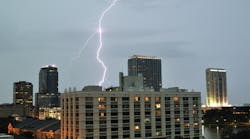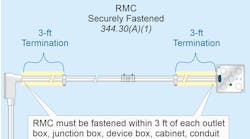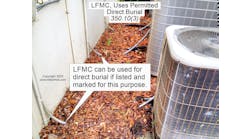Q. What is the Code rule regarding the bonding of electrically conductive materials and other equipment?
See the answer below.
A. Bonding of electrical equipment is covered by Sec. 250.4(A)(2), (3), and (4). Metal parts of electrical equipment are grounded to reduce arcing within the buildings/structures from induced voltage from indirect lightning strikes.
Danger: Failure to ground metal parts to earth can result in induced voltage on metal parts from an indirect lightning strike seeking a path to the earth within the building — possibly resulting in a fire and/or electric shock from a side flash.
Grounding metal parts helps drain off static electricity charges before flashover potential is reached. Static grounding is often used in areas where the discharge (arcing) of the voltage buildup (static) can cause dangerous or undesirable conditions [Sec. 500.4, Note 3].
Metal parts of electrical raceways, cables, enclosures, and equipment must be connected to the supply source via an effective ground‑fault current path [Sec. 250.4(A)(3)]. See Sec. 250.4(A)(5).
To quickly remove dangerous voltage on metal parts from a ground fault, the effective ground‑fault current path must have sufficiently low impedance to the source so fault current will quickly rise to a level that will open the branch‑circuit overcurrent protection device.
The time it takes for an overcurrent protection device to open is dependent on the magnitude of the fault current. A higher fault current value will result in a shorter clearing time for the overcurrent protection device. For example, a 20A overcurrent protection device with an overload of 40A (two times the 20A rating) takes 25 to 150 seconds to open. The same device at 100A (five times the 20A rating) trips in 5 to 20 seconds.
Electrically conductive materials likely to become energized, such as metal water piping systems, metal sprinkler piping, metal gas piping, and other metal‑piping systems, as well as exposed structural steel members, must be connected to the supply source via an effective ground‑fault current path.
The phrase “likely to become energized” is subject to interpretation by the authority having jurisdiction.
These materials are provided to us by Mike Holt Enterprises in Leesburg, Fla. To view Code training materials provided by this company, visit www.mikeholt.com/code.





